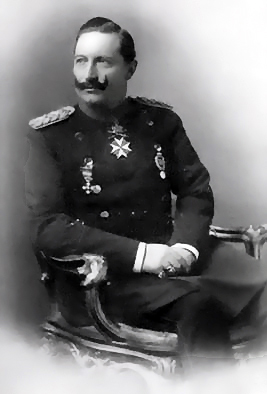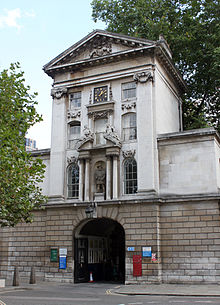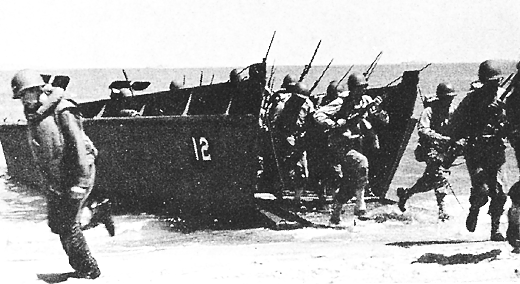Germany is a terrible country.
Or at least, that’s the impression you get after reading about Germany in school. The Berlin Wall, Nazism, the Franco-Prussian War, the Great War, the Second Great War, concentration-camps, antisemitism and horrible, horrible, horrible food.
And that might all be true. Germany has not had the greatest of pasts. Why it was only about twenty years ago that Germany became a proper country again. Forever and always, it’s a country that’s been overshadowed by the two greatest conflicts in history, bullied by every other country on earth for starting wars that nobody wanted. A history teacher of mine once said that the Second World War was nothing more than Act II of a big and continuous conflict that had never really finished after the end of the First World War in 1918. And this is probably a view held by quite a few people, that Germany, sore and licking its wounds after being defeated in World War One, planned for twenty years to come back and kick butt again and…lose again…even more spectacularly.
Amazingly…this isn’t true.
Germany between the Wars was a struggling country that for about fifteen years, enjoyed a brief, oh-so-brief existence as a country with culture, music and entertainment and unity that wouldn’t be felt again until the fall of the Berlin Wall in 1989, fifty years after the start of the Second World War.
Germany after the First World War
Germany at the close of the First World War was a bloody mess. The humiliating Treaty of Versailles ruffled a lot of German feathers. Germany’s army and navy were forcibly downsized and Germany was not allowed to have an airforce. There were significant territorial changes as well. France, Denmark and Poland all took slices out of Germany and German shipping-companies were forced to sell all their new (or soon-to-be-completed) ocean-liners to the Allies as forms of war-reparations. One of the most famous of these ships was the R.M.S. Berengaria. Originally named the S.S. Imperator, the ship was sold to the British after the end of the First World War as part of Germany’s war-reparations. The Berengaria spent only a year and a month sailing for the German Hamburg-America shipping-line. It was used briefly by the U.S. Navy before being sent to the famous British shipping company, the Cunard Line in 1919 where it served for twenty years until 1939.

The S.S. Imperator/R.M.S. Berengaria
The First World War changed a lot of things in Europe. National boundaries were redrawn, maps were reprinted and monarchies and empires that had lasted for centuries, collapsed in less than a decade. The Russian Empire, ruled over by the fantastically wealthy Romanov Dynasty, vanished into history in 1917. In Germany, the king, Wilhelm the Second, abdicated at the end of the war and Germany was to become a republican democracy. And a republican democracy it would forever remain. Or at least, that was the plan.

Kaiser Wilhelm II. Notice that his right hand is clasped over his left. He posed like this deliberately so that nobody would see his deformed left hand
The Weimar Republic
The Weimar Republic was the Germany that never was. Like a line out of a certain Marlon Brando film, Germany could’ve been something. It could’ve been a contender, instead of a bum, which is what it became.
The Weimar Republic was the government that replaced the German Empire in 1918. It gets its name from the city of…Weimar, where this new form of governance was conceived. It was in Weimar that a new constitution was written up and the new government declared operational. It would start an era known as the Second Reich. In English, the German word ‘Reich’ roughly translates as ‘Realm’ or ‘State’. The first unified German state or ‘Reich’ (from 1871-1918) was the German Empire.
The Second Reich, the Weimar Republic, wanted to create a new, modern, glorious Germany. A country that would be strong, respected, cultured, diverse and learned. And for fourteen years, fourteen oh-so-short years, the German people and the people of the world, got a glimpse into what might have been.
1922: The German Hyperinflation Crisis
The Weimar Republic was shaken constantly by all kinds of economic and political earthquakes. It would take years to pay off Germany’s war-reparations to the victors of the Great War. The reparations cost money. And the Germans needed more money. So they started printing more German Marks. And so they did. But then the value of the Mark dropped, because money is only worth something if it’s relatively scarce. So because the value of the Mark dropped, it wasn’t worth as much. Which meant that the German government had to print even more money to compensate for the drop in value. Which caused even less scarcity, which caused a further drop in value, which necessitated more printing of more money for less value which required more printing of more money for…You get the picture.

You don’t have to read German to know that’s a lot of worthless money. Pictured here are German Mark banknotes that read “50 Million” and “20 Million” Marks. They date from 1923
By 1922, Germany was royally screwed. The crippling war-debts that it had to pay were wreaking havoc with the German currency system. In a matter of months, hundreds, thousands, tens of thousands, hundreds of thousands, millions, billions, trillions of Marks…became absolutely worthless. It was a disaster. People who had saved thousands of Marks to put their kids through school, or buy a car, or buy a house, or that new suit, or the new radio that they wanted…suddenly went to the bank to be told that their life-savings…were now worthless. Prices on ordinary, everyday items skyrocketed and housewives would go shopping with baby-perambulators. Not to hold the baby, but to hold the billions of Marks they needed just to buy a dozen eggs. Husbands carried home their paychecks from the banks in their wives’ washing-baskets and children played with stacks of thousands of Mark-banknotes as if they were building-blocks. At home, people literally had money to burn, and they fed their fireplaces and stoves with worthless banknotes to start cooking dinner. The German Mark was quite literally, not worth the paper it was printed on. By the November of 1923, the German Mark was in such dire straits that people were being issued with banknotes that had ‘values’ printed on them up in the billions of marks range.
The situation in Germany grew desperate. Businesses and shops were closing down and food-riots were becoming common. Businesses couldn’t do business and shopkeepers wouldn’t sell their wares to people who paid with money that wasn’t worth anything. Farmers refused to import their produce into towns to be paid in paper banknotes that were not worth anything. Ordinary, hardworking Germans were laid-off as their companies became unable to pay their skyrocketing wages and salaries and people started losing their jobs.
Like I said above, by November of 1923, the hyperinflation crisis was completely out of control. The old German Mark was completely worthless and the economy was in a shambles. To rescue the country, the banks found a simple solution to their problems. Instead of printing mindblowingly high denominations of the same currency all the time…why not print a new currency?
This currency reform resulted in the creation of the Rentenmark, named after the Renten Bank which created and issued this new German currency. Over the next few weeks, the currency finally stablised and things gradually returned to normal.
The Start of the Nazis
But what else was happening in Germany?
Well, in 1922, a small, insignificant political party was formed. The Nationalsozialistiche Deutsche Arbeiterpartei The NSDAP. The National Socialist German Workers’ Party. Big mouthful, huh?
Let’s call them something simpler. Let’s call them…
The Nazis.
Contrary to what you might think, the Nazis were not established by Adolf Hitler. He merely took hold of them once they were established. A man named Anton Drexler founded the Nazis in 1922. In 1923, the Nazis staged the famous Beer Hall Putsch, also called the Munich Putsch. ‘Putsch’ is a German word that basically means ‘Uprising’ or ‘Revolution’. It was meant to try and give the Nazis some standing and recognition in the political community. What it got them was legal trouble. Thanks to the putsch, Hitler got chucked in jail…where he wrote the book “Mein Kampf”, ‘My Struggle’.
With the Nazis temporarily out of the way, Germany enjoyed a wonderful decade in the sun.
The German Renaissance
From 1923-1933, Germany enjoyed a cultural high-time that would not be seen again until after the end of the Second World War. For ten short, wonderful years, everything was coming up roses. Germany became famous for its cafe culture, it’s jazz-clubs, it’s cabaret-shows, it’s saucy, naughty sex-shows, nightclubs, jazz-bands, popular music, crooners, a-capella harmony-groups, such as the appropriately named “Comedian Harmonists” and a rising film-industry. The 1927 German film “Metropolis” was one of the most famous films to come out of Germany in this time.

From 1919 until 1933, a design and architectual movement known as ‘Bauhaus’ swept across Germany. Bauhaus designs were sleek, angular and modern. Nothing like the ornate, highly-decorated, intricately crafted buildings of pre-war Germany. It was like the German answer to American and British Art Deco of the 1920s.
For at least ten of fourteen years, Germany was riding high. It had everything. Jazz. Sex. Drugs. Transvestites. A thriving music industry, film industry, automotive industry and fascinating architecture. But it was not to last.
The Great Depression
Like almost every other country in the world, Germany was knocked hard by the Great Depression. The Wall Street Crash of 1929 did little to shake things up, but by the start of the 1930s, things were looking bleak. By 1932 and 1933, the Depression had reached the lowest point that it ever would, and Germany was in desperate trouble. People were out of work again for the second time in less than ten years, and the German government had no idea what to do. The sensible thing of course, was to get people working again. To give them jobs. Any jobs. And if there aren’t jobs…create jobs by planning ambitious public-works projects, like what the American government was doing, with construction-projects like the Hoover Dam. If nothing else, big jobs like this would get people working, get people earning money, get people spending, and get the economy back on track.
But there’s a problem. Big public-works projects require big money. Not easy to get when the country’s bust. So how do they get more money? They have to print more money. But the last time they printed more money, they had hyperinflation that destroyed the economy. The Germans were desperate for a way out. They had no idea what to do.
The Reichstag Fire
The Reichstag is the enormous and grand Victorian-era building that houses the German Parliament. Here’s a photo of it:

On the 27th of February, 1933, the Reichstag was the target of a vicious arson-attack by an out-of-work bricklayer. The fire was so severe that a considerable portion of the building was gutted and the interior badly damaged. Public confidence in the government was shaken and people were nervous and scared. It was at this time that a man named Adolf Hitler approached the German president, Paul Von Hindenberg, who unwittingly signed into law, various emergency measures. Taking advantage of the public nervousness following the Reichstag fire, the Nazi Party with Hitler at its head, swept into power before year’s end, starting the Third Reich, and twelve years of increasing terror and oppression on a country that had come so far in so short a time, and with so much to lose…
The Effect of Nazism
“Why”, you might ask, did Nazism have such a negative effect on Germany? And why did the Germans vote for Nazism if they knew what a horrible thing it was?
Well, the fact was, that they didn’t know what a horrible thing it was. Don’t forget that in the early 1930s, Germany was so desperate for a way out of the Depression that they were willing to try anything. Including putting their faith in a scrawny guy with a toothbrush moustache and a half-jar of Brylcreem in his hair. While initially, the Nazi presence in Germany was welcomed, its racial policies soon destroyed everything that Germany had struggled for years to make for itself. The music, the jazz, the beautiful buildings, the nightclubs, the moving-pictures, the actors, the authors, writers, painters, composers and architects all vanished. And with it, Germany had lost irreplacable culture. Why did they all vanish?
Because they were all Jews.
The majority of German intellectuals (doctors, lawyers, scientists, professors, teachers, writers and architects) and artists (such as writers, filmmakers, musicians, singers, songwriters, painters and composers) were all Jewish, or were Jewish-sympathisers. The Nazi Party’s strong antisemitic policies meant that thousands of Jews fled Germany for England, America and China during the second half of the 1930s, taking all of the best of German culture with them. Just how strong was Nazi antisemitism?
I’m going to introduce you to a song. It goes by many names. In English, its translated title is “To Me, You’re Beautiful”. Isn’t that a wonderful title? It’s more commonly known by its German title: “Bei Mir Bist Du Schoen”. And it was a smash-hit around the world during the early 1930s, especially in Germany. It was extremely popular and dozens of artists recorded it. Want some names? Benny Goodman. The Andrews Sisters. Ella Fitzgerald. Guy Lombardo. Even legendary 1930s crooner Al Bowlly covered it. It was an extremely popular tune.
“Bei Mir Bistu Shein”, the original Yiddish sheet-music cover
But why am I mentioning this song?
Because it was extremely popular in Weimar Germany. In fact, it was extremely popular all over the world. And it was extremely popular with the Nazis.
…Until they discovered that the song’s title is actually “Bei Mir Bistu Shein“. Why is this a problem? Because that’s not German. It’s not English.
It’s Yiddish. One of the chief languages spoken by…Jews. You guessed it. This beautiful piece of music was written and composed by Jews.
The moment the Nazis found this out, the song was immediately outlawed and banned throughout all of Germany. Just one extreme example of the conviction of Nazi antisemitism and the shocking toll it took on the German Renaissance of the 1920s and 30s.
Continuing in this vein, the musical group I mentioned earlier, the ‘Comedian Harmonists’ had to break up because some of their members were Jews and they were terrified of the Nazis. They fled to America…where they couldn’t find work because being German in the 1940s was kind of dangerous…and the remaining, ‘Aryan’ German members of the group couldn’t continue with their work…because the Nazis had banned jazz! And if that wasn’t bad enough, they’d also forbidden musical groups from giving themselves English-sounding names! ‘Comedian Harmonists’ isn’t the translation of their name from German to English…It was their name and it was their only name. The only one they’d ever had.
Fritz Lang, the director who produced the famous film ‘Metropolis’, fled to America in 1936 because he felt intimidated by the Nazis…He was also a Jew. A lot of actors in Germany fled to America and worked in Hollywood. Bauhaus architecture died under the strict Nazi regime and the once free and easy Germany had lost freedoms that it wouldn’t know again until 1946.












































 Schindler’s enamelware factory in Krakow as it appears today
Schindler’s enamelware factory in Krakow as it appears today












